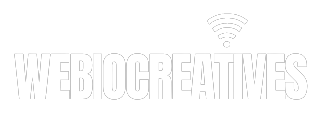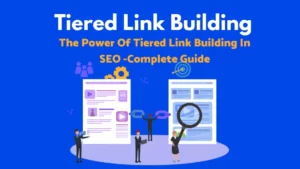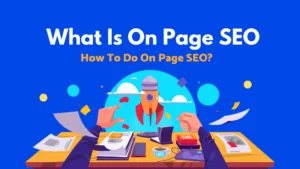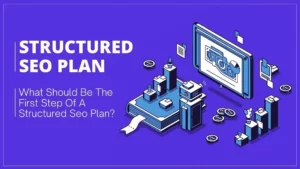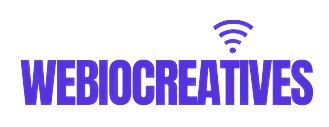
What Should Be The First Step Of A Structured Seo Plan?
Table of Contents
⚡ New here? Check out our most demanding SEO Audit Services Now!
In the constantly changing digital landscape, Search Engine Optimization (SEO) is like the compass that points websites towards success. It’s reliable and will always get you what you need. But where should you start? What should be the first step of a structured SEO plan?? The first step of structuring a SEO plan is just like laying down the foundation for a house — it sets up absolutely everything else. And that’s what makes it the most crucial part.
Let’s say you’re ready for a cross-country road trip. You would have to plan which routes you’re going to take, make sure your car is good to go and pack everything you need for it. Similarly, the first step in your SEO plan is all about preparing. This phase may not seem as glamorous as, say, skyrocketing to the top of Google’s search results, but without it, all your future efforts could easily crumble.
So, what’s this all-important first step? Let’s break it down into manageable pieces.
What is a Structured SEO Plan?
What is an SEO strategy? It’s a well-planned strategy to help websites increase their rankings on search engines such as Google. This method involves a set of steps that are designed to improve the rank of a website and to attract an increase in natural (unpaid) visitors.
A well-organized SEO plan acts as an outline that will ensure you’re on the right track toward success. It assists you in focusing your efforts, remaining focused, and accomplishing your goals in SEO.
What Is The First Step In Search Engine Optimization?
A solid foundation is paramount to the success of your search engine optimization strategy. Without a solid foundation, your efforts will fail. The first step involves the following crucial aspects:
⚡ New here? Check out our most demanding SEO Audit Services Now!
Understanding Your Audience
If you want your website to attract the right visitors, it’s essential to know who those visitors are. This means taking the time to understand your audience. While it’s easy to focus on keyword research and optimizations, this can be a waste of time if you don’t know who they are in the first place.
What Makes Your Audience Tick?
Your audience isn’t a monolithic group; they’re individuals with diverse interests, needs, and behaviors. Begin by asking these questions:
- Who are your ideal customers or visitors? Create a detailed persona for your typical audience member. What’s their age, gender, location, and job title?
- What are their pain points and desires? What problems are they trying to solve, and what goals are they hoping to achieve? By understanding this, you can tailor your content and SEO strategy to address their needs.
- Where do they hang out online? Are they active on social media, forums, or specific websites? Knowing their digital stomping grounds helps you reach them more effectively.
- What language do they speak? Not a specific foreign one, but rather certain words and phrases that your audience uses when searching for information online.
Crafting a Buyer's Journey
Getting to know your audience isn’t just about demographics; it’s about mapping their journey from curiosity to conversion. Think of it as a three-step process:
Awareness: At the beginning of their journey, your audience becomes aware of a problem or need. Your goal is to create content that addresses these early questions and concerns.
Consideration: During this stage, potential customers are weighing their options. They’re looking for in-depth information, comparisons, and solutions. Your content should guide them in making an informed decision.
Decision: At the final stage, your audience is ready to convert. This is where you present your products or services as the best solution and make it easy for them to take action.
Understanding this journey will help you create content that meets your audience where they are and guides them toward your desired outcome.
Keyword Research: The Bridge to Your Audience
Now that you know who your audience is, it’s time to bridge the gap between their questions and your answers. This is where keyword research really shows its worth, and your first SEO step isn’t complete without it.
Keywords, basically are the words and phrases people use when searching on Google or other search engines. By knowing the language your audience speaks (as mentioned earlier), you can identify the terms they’re using to find information, products, or services related to your website.
⚡ New here? Check out our most demanding SEO Audit Services Now!
The Basics of Keyword Research
Keyword research isn’t about stuffing your content with as many keywords as possible. It’s about identifying the most relevant and valuable keywords for your website. Here’s how to do it:
- Brainstorm: Start by brainstorming a list of keywords and phrases that are relevant to your business or website. What your audience might type into a search engine to find you.
- Expand: Use keyword research tools like Google’s Keyword Planner or third-party tools like Ahrefs and Moz to expand your list. These tools provide insights into search volume, competition, and related keywords.
- Analyze: Evaluate the keywords on your list. Look for keywords with a good balance of search volume (how often they’re searched) and competition (how many other websites are targeting them).
- Long-Tail Keywords: Don’t forget about long-tail keywords, which are longer and more specific phrases. They might have lower search volumes, but they often convert better because they’re more targeted.
- User Intent: Consider the user’s intent behind each keyword. Are they looking for information, a product, or a specific service? This helps you align your content with what the user is searching for.
- Prioritize Keywords: Once you have a list of potential keywords, prioritize them based on their relevance to your audience and business goals. Some keywords might be more important for generating sales, while others could be essential for educating your audience.
On-Page SEO: Making Your Content Shine
With your keyword list in hand, you’re ready to tackle on-page SEO. This step involves optimizing the individual pages on your website to make them more search engine-friendly. Here are some key elements to focus on:
Content Quality
Your content is the heart of your website. It should be informative, engaging, and valuable to your audience. High-quality content not only pleases your human readers but also impresses search engines. Google’s algorithms are designed to reward content that provides real value.
Tips for High-Quality Content
Originality: Avoid duplicate content. Make sure your content is unique and not copied from other sources.
Relevance: Ensure your content is relevant to your chosen keywords and your audience’s needs.
Length: While there’s no magic word count, longer, more comprehensive content often performs better.
Readability: Use clear and concise language. Break up text with headings, bullet points, and images to enhance readability.
Title Tags and Meta Descriptions: Title tags and meta descriptions are the snippets that appear in search engine results. These should be both informative and enticing, encouraging users to click through to your content.
Tips for Title Tags and Meta Descriptions
Include your target keyword: Naturally place the keyword near the beginning of the title tag and within the meta description.
Stay within character limits: Google displays a limited number of characters for title tags and meta descriptions. Keep them concise.
Unique for each page: Customize title tags and meta descriptions for each page to accurately reflect the content.
Header Tags
Header tags (H1, H2, H3, etc.) are used to structure your content and make it more scannable. The H1 tag should be reserved for the main title of your page, while the H2 and H3 tags are used to break up content into sections and subsections. Header tags not only help with SEO but also improve the overall user experience.
URL Structure
Your website’s URLs should be clean, descriptive, and easy to read. Avoid using long strings of numbers and symbols. Use hyphens to separate words in your URLs.
For example:
yourwebsite.com/how-to-choose-keywords
is much more user-friendly than
yourwebsite.com/page123?1234
Image Optimization
Images are essential for making your content visually appealing, but they can also impact your site’s load time. Use image compression to reduce file sizes and ensure your images have descriptive alt text. Alt text is used to describe the image’s content and is valuable for accessibility and SEO.
Internal and External Links
Linking is another critical on-page SEO element. Internal links guide users to related content on your site, improving the user experience and helping search engines understand your site’s structure. External links (links to other reputable websites) can also enhance your site’s authority and credibility.
⚡ New here? Check out our most demanding SEO Audit Services Now!
Technical SEO: Behind-the-Scenes Optimization
The next step in building your SEO foundation is technical SEO. While it may not be as visible as on-page SEO, it’s equally important. Technical SEO involves optimizing the technical aspects of your website to improve its performance and accessibility to search engines.
Website Speed
Website speed matters. Users tend to abandon slow-loading sites, and search engines factor speed into their rankings. To improve your site’s speed:
1. Optimize images for web use.
2. Use browser caching.
3. Minimize HTTP requests.
4. Choose a reliable hosting provider.
Mobile Friendliness
With the increasing use of mobile devices, your website must be mobile-friendly. Google now prioritizes mobile-friendly websites in its rankings. Ensure that your site is responsive and provides a seamless experience on all devices.
XML Sitemap
An XML sitemap is a roadmap for search engines, showing them how your site is structured. It helps search engines index your site’s pages more efficiently. There are many tools and plugins available to generate XML sitemaps for your website.
Robots.txt File
A robots.txt file is used to communicate with search engine crawlers, telling them which parts of your site to crawl and index and which parts to ignore. Properly configured robots.txt files can prevent the indexing of sensitive or duplicate content.
SSL Certificate
An SSL certificate ensures that data transferred between your website and its visitors is encrypted and secure. Websites with SSL certificates are indicated by “https://” in the URL, which can boost user trust and search engine rankings.
Tracking and Analytics: Measuring Success
⚡ New here? Check out our most demanding SEO Audit Services Now!
The final piece of your foundational SEO plan is tracking and analytics. Once you’ve implemented all the above steps, you need a way to measure your progress, identify areas for improvement, and understand how your audience interacts with your site.
Google Analytics
Google Analytics is a powerful, free tool that provides detailed insights into your website’s performance. It tracks user behavior, audience demographics, traffic sources, and more. By understanding these metrics, you can make data-driven decisions to enhance your SEO strategy.
Google Search Console
Google Search Console is another free tool offered by Google. It provides information about how Googlebot views your site, including which pages are indexed, any crawl errors, and keyword data. It also offers tools for submitting sitemaps and resolving issues.
SEO Software
There are numerous paid SEO software tools available, such as Moz and SEMrush, that provide in-depth insights and analytics. While these can be valuable, they are not necessary for beginners. Google Analytics and Search Console provide a strong foundation for tracking and analytics.
Final Words
In conclusion, An SEO campaign that is built on a solid foundation is guaranteed to last for a long time. However, SEO is an ongoing process, and by regularly monitoring your site’s performance and staying up-to-date with industry trends, you can continue to grow and thrive in the digital landscape.

Webio Creatives Team
WebioCreatives keeps you informed on the latest digital marketing trends and experiences that leave lasting impressions. Make informed decisions with our expert guidance.
